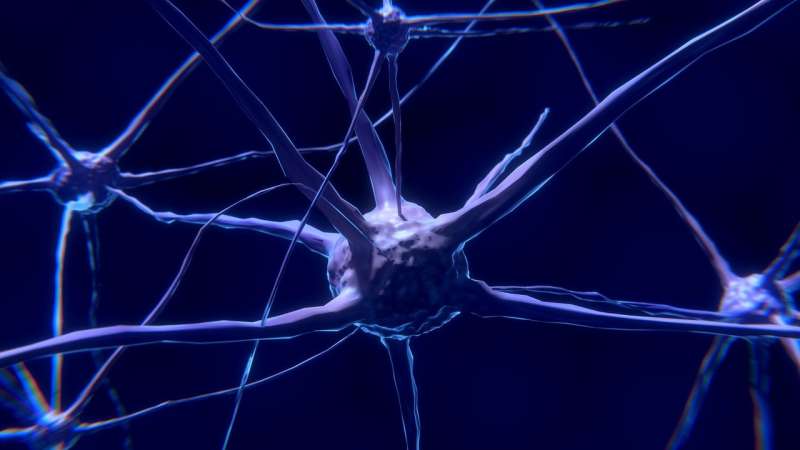Protein has unique effects in neural connections related to information processing

Our cognitive abilities come down to how well the connections, or synapses, between our brain cells transmit signals. A new study by researchers at MIT's Picower Institute for Learning and Memory digs deep into the molecular mechanisms that enable synaptic transmission to show the distinct role of a protein that when mutated has been linked to causing intellectual disability.
The key protein, called SAP102, is one of four members of a family of proteins, called PSD-MAGUKs, that regulate the transport and placement of key receptors called AMPARs on the receiving end of a synapse. But how each member of the family works, for instance as the brain progresses through development to maturity, is not well understood. The new study in the Journal of Neurophysiology shows that SAP102 and other family members like PSD-95, work in different ways, a feature whose evolution may have contributed to the greater cognitive capacity of mammals and other vertebrates.
"Our results show that PSD-95 and SAP102 regulate synaptic AMPAR function differently," wrote the researchers including senior author Weifeng Xu, assistant professor in MIT department of Brain and Cognitive Sciences, and lead author Mingna Liu, a former postodoc in Xu's lab who is now at the University of Virginia.
"This study is part of a continuous effort in our lab to elucidate the molecular machinery for tuning synaptic transmission critical for cognition," Xu said.
Current affairs
Specifically, the scientists found that the proteins distinctly affected how quickly electrical currents lost strength in postsynaptic cells, or neurons.
"For the first time we show that PSD-95 and SAP102 have differential effects on the decay kinetics of synaptic AMPAR currents," they wrote.
In one key set of experiments in rats in a region of the brain called the hippocampus, the researchers showed that while knocking out PSD-95 causes a reduction in AMPAR current frequency and amplitude, they could restore those by replacing PSD-95 with a different form, PSD-95alpha, or with SAP102. They did these manipulations by using a virus to make the swap, a technique called molecular replacement that Xu has developed.
But the two proteins are not merely interchangeable. Compared to control neurons with normal PSD-95 or cells in which PSD-95 was replaced with PSD-95alpha, cells in which PSD-95 was replaced with SAP102 had different AMPAR current "kinetics," meaning that the currents took longer to decay. That timing difference made by SAP102 could make an important difference in how synapses operate to affect cognition.
"These data showed that PSD-95alpha and SAP102 have distinct effects on the decay time of synaptic AMPAR currents, which potentially lead to differential synaptic integration for neuronal information processing," they wrote.
Protein partner
In another set of experiments, the team showed that SAP102 uniquely depends on another protein called CNIH-2. Knocking the protein down on its own didn't affect AMPAR currents, but when they knocked down CNIH-2 in the context of replacing PSD-95 with PSD-95alpha or SAP102, the researchers found that SAP102 could no longer restore the currents. Meanwhile, knocking down CNIH-2 had no effect on PSD-95alpha's rescue of AMPAR currents.
"These data showed that the effect of SAP102 but not that of PSD-95alpha on synaptic AMPAR currents depends on CNIH-2, suggesting that SAP102 and PSD-95alpha regulate different AMPAR complexes," they wrote.
In all the findings suggest that the diversity of AMPAR regulation leads to cognitively consequential differences in current timing at synapses.
"It is likely the AMPAR complex diversity contributes to the temporal profile of synaptic events important for information encoding and integration in different cell types and synapses," they wrote.
More information: Mingna Liu et al, SAP102 regulates synaptic AMPAR function through a CNIH-2-dependent mechanism, Journal of Neurophysiology (2018). DOI: 10.1152/jn.00731.2017




















